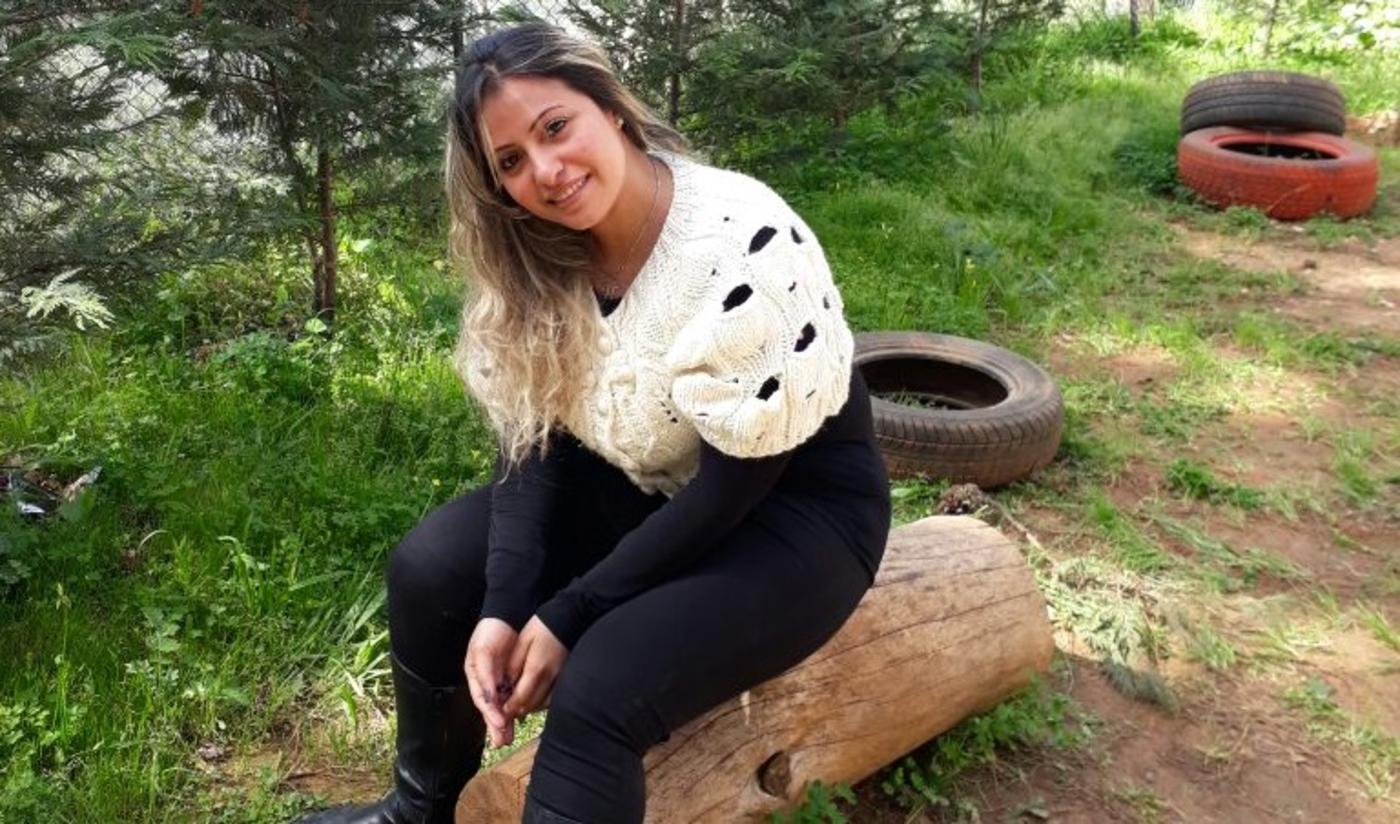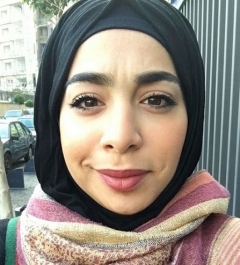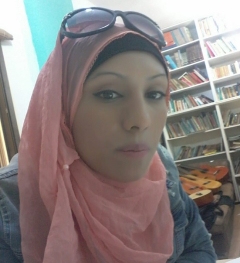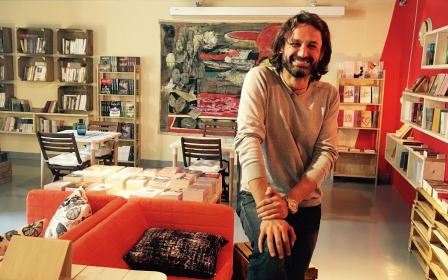Shatila the novel: Refugee authors find their voice on the page

LONDON – Reham’s family is waiting at the Syrian-Lebanese border among hundreds of thousands of anxious people as they prepare for the opening of a gate. With their paperwork in hand, their fate beckons.
After Reham's family finally passes through the gate, they set off in a car towards the Lebanese capital Beirut. Harrowing scenes of “shooting and shouting and panic and fear and blood” flicker through her mind before she finally succumbs to sleep.
When Reham arrives at Shatila camp, she and her family meet Muneef, a young man living in the camp who guides them towards the apartment that would become their new home. She spots graffiti on a wall that Muneef proudly declares he had freshly painted that morning, which reads, "Don’t talk about the camp unless you know it."
This is the opening chapter of the novel, Shatila Stories, written by nine refugees. Most of them either live in the Shatila camp or have lived there at some point in their lives. The camp was the site of the infamous 1982 Sabra and Shatila massacre, when around 2,000 Palestinian refugees were killed by Lebanese Christian militiamen backed by Israeli troops.
New MEE newsletter: Jerusalem Dispatch
Sign up to get the latest insights and analysis on Israel-Palestine, alongside Turkey Unpacked and other MEE newsletters
The camp was established in 1949 by the International Committee of the Red Cross, initially as a temporary refuge for Palestinians who were forcefully displaced when the state of Israel was created in 1948, in what Palestinians refer to as the Nakba (catastrophe).
Over the years, the population of the camp has swelled and with the recent influx of thousands of Syrian refugees, some local NGOs estimate that Shatila, which covers one square kilometre, is home to around 42,000 people.
Hiba Marei, the author of the opening chapter, describes a chaotic scene at the Syrian-Lebanese border that resembles her own experience of fleeing a war-torn Syria.
A Palestinian-Syrian born in the Yarmouk refugee camp in Damascus, Marei and her family fled in December 2012 after the camp suffered an air strike by Syrian government forces. Travelling by car across the border, Reham’s family are dropped off at the entrance to the camp.
“Writing the story took me back to those first moments of being in Shatila,” Marei says. "I remember feeling I was somewhere very different that needed to be written about.
Marei and her family decided to leave Shatila camp in 2014, after they were inadvertently caught up in a battle between two drug dealers. The bullets exchanged punctured the walls of their modest family home before they moved to the Mar Elias refugee camp, which she says is much safer.
In the novel, when the protagonist Reham was in Syria, she fell in love with Marwan, the man of her dreams, and revelled in the honeymoon period and the couple's new home. It seemed like she had gotten everything she wanted in life, but her world came crashing down on her after delivering a baby girl with Down syndrome.
Reham is soon abandoned by Marwan and within weeks of her newborn's birth, tragedy strikes with the death of her baby. Yet despite a disapproving mother, a difficult relationship with her in-laws and an unforgiving society, Reham shows incredible resolve. By the end of the novel, Reham divorces her husband. Reham's story is based on real life events that occurred to a friend of Safiya Badran, who contributed to the protagonist’s storyline.
“I chose to write this story because it is a reality that women here face but cannot speak about. A choice does exist, but only for women who have enough courage, determination and capability. Reham proved that life is not the reserve of men; that they are not the only ones who can decide the course of fate and that divorce does not have to [mean the end] for a woman,” she says.
A Syrian who moved to Beirut in 2011 following the start of the Syrian war, Badran says her family decided to escape the intense cycle of violence in her hometown of Maarat al-Numan, in Idlib province. According to Badran, Maarat al-Numan had been transformed into a city of ghosts.
After living in the Shatila camp for only one year, she moved to another refugee camp, once again fleeing violence in an area where she says arms and drug trading is rife.
Today, Badran works for Basmeh & Zeitooneh, an NGO in the Shatila camp that helped select some of the writers for the book's project, in conjunction with a UK-based publisher.
A kickstarter campaign helped finance the ambitious endeavour.
Workshop in the camp
In the summer of 2017, a three-day creative writing workshop was led by independent publisher Meike Ziervogel of Peirene Press and London-based Syrian editor Suhir Helal. Together, the workshop participants – six of whom are women – produced writing that would eventually be woven into one novel.
With minimal amenities and services, the camp's residents are forced to cope with living conditions that range from the squalid to the life threatening. They describe the "dim, muddy alleyways," teeming with rubbish heaps; the scurrying rats and the low-hanging "tangled electrical cables" that are a common cause of fatalities.
I wanted someone to share this story with me and help offload some of the pain
- Safa Khaled al-Gharbawi
Upon their arrival in Shatila, it became clear to the workshop leaders that the project would be more challenging than originally anticipated. This would be the first time several of the selected participants would write a short story. Many had never completed formal schooling and some had never read a novel.
As the book officially launched during Refugee Week 2018 in London's Gower Street branch of Waterstones bookshop, Ziervogel recalls her vision for the project.
“I wanted the writers to create a collaborative work of fiction,” Ziervogel says. “Because by pooling our imaginations we are able to access something totally different and new that goes beyond boundaries; that of the individual, of nations, of cultures.”
For editor Helal, a Syrian who moved to London in 1998, where she now works with Syrian refugees, the motivation behind the project was more personal.
“When the refugee crisis and the conflict in Syria faced us, I felt powerless and helpless. I wanted to do something that I believed in. Meike approached me to take part in this project and it went straight to my heart. I thought, yes, this is the best way to respond to the crisis, as I believe in words and creativity,” Helal explains.
Helal had no doubt that women would want to sign up to the workshop. In fact, two thirds of the writers of Shatila Stories happen to be women.
“I remember that the first writing samples some of the participants had sent ahead of our first meeting were about the conditions of women in Arab society. And then, when we met them, once again I felt that writing would be liberating for them, that they would go for it rather than censoring themselves, and tell the stories they are afraid to reveal in their day to day lives,” Helal says.
Jafra’s story
One storyline features child marriage, involving a young girl named Jafra and scenes of domestic violence.
Rayan Mohamad Sukkar, 25, the author of Jafra’s story, does not simply outline an endemic problem; instead she delves much deeper into the issues. Sukkar presents the layered context required to understand what could drive a family to perform such desperate acts.
Sukkar based her work on the true story of her grandmother’s childhood. A Palestinian-Lebanese woman who was born in the Shatila camp, Sukkar recalls growing up listening to her grandmother's story. She was married off at the age of 11 to a 74-year old man. Like the character Jafra in her story, the grandmother’s mother objected to the marriage but was pressured by her physically abusive stepfather.
“Since I was a young girl, I have struggled to comprehend or accept this story of my grandmother, so I decided to invite the readers to join me in this incomprehension," Sukkar explains.
"She was forced to live as a refugee and she was denied many rights, at the height of these, her right to a childhood," she adds.
One of the novel’s other female protagonists, Shatha, is the brainchild of 23-year old Palestinian-Lebanese author Fatima Omar Ghazawi. In an extract from the novel, Shatha describes the struggle faced by refugees to find work.
“Our reality is such that when we are young we are taught to be ambitious, study, go to university and follow our dreams professionally. Then, after we graduate, we discover that we will only be hired for a job that suits our nationality.”
In Ghazawi’s story, Shatha holds a media degree from a Lebanese university, which her stepmother is quick to deride, claiming it will get her nowhere.
Born in the Shatila camp, Ghazawi says the issue of employment is a key problem faced by refugees like her, yet it is one that she decided to approach in a positive light. In her narrative, Shatha persists in her job search, eventually landing a job at a drug rehabilitation centre as a cook and a cleaner.
Confronting the past
The writers had to overcome challenges such as baring their souls through storytelling, which meant confronting emotions that were hidden away.
Safa Khaled al-Gharbawi is a Syrian author who was born in Damascus. Her family arrived at the Shatila camp in 2013 after months of wandering and seeking shelter in strangers’ homes throughout the Syrian governorate of Daraa where they lived, before making their way to Lebanon via Damascus as they fled the increasing violence.
One of the scenes authored by al-Gharbawi involves a criminal character named Youssef. In her story, Youssef and his wife Samar are a childless couple who employ children in the Shatila camp, some of whom are either disabled or whose fathers have died or are missing. The pair then involve the children in illicit activities such as petty robbery, drug running and begging for money.
Based on true events that al-Gharbawi has witnessed, she says it took her some time before she was able to write these stories.“It wasn’t easy at all…but once you put everything down on paper, you relax and then you can write with honesty and transparency and maybe even a little originality,” she says.
“I wanted someone to share this story with me and help offload some of the pain," she adds.
Telling the stories of life in the Shatila camp is one objective that unites these writers. As opposed to reports by transitory guests, the reality is rather different for those with nowhere else to go.
“We normalised their lives instead of treating them as victims. We did not go there to deliver aid, money or food. We went there to deliver a unique workshop that touches the hidden aspect of our existence, the creativity and imagination of [a] human being," Helal says.
And, as Shatila author Badran emphasises, there are many more stories yet to be told.
“With the release of this novel, we hope that the voices of the women in the camp will be heard. But what still lies within me is more, and even greater."
This article was originally published on 28 June, 2018
Shatila Stories, by Omar Khaled Ahmad, Nibal Alalo, Safa Khaled Algharbawi, Omar Abdellatif Alndaf, Rayan Mohamad Sukkar, Safiya Badran, Fatima Omar Ghazawi, Samih Mahmoud and Hiba Marei, is available from Peirene Press, translated by Nashwa Gowanlock
Middle East Eye delivers independent and unrivalled coverage and analysis of the Middle East, North Africa and beyond. To learn more about republishing this content and the associated fees, please fill out this form. More about MEE can be found here.












